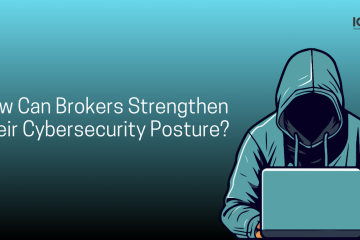Fundraising is one of the most critical parts of the current economy. It is a known fact that most of the companies and startups in the world would have not been able to provide their services or products if people didn’t invest in them. While raising sufficient capital was never an easy task, there were fewer options. Not to mention that the system was plagued with many inconsistencies and security issues. However, times have changed.
Today, technologies like blockchain have changed the entire landscape of fundraising. The novel technology not only gets rid off the third-parties from the scenario but also enhances transparency in transactions. The crypto space experienced a wave of change when the tokenized form of fundraising started gaining popularity. With time, other types of fundraising started evolving— ICOs, STOs and IEOs started attracting investors to a new world of crypto assets. Yet, which one of these fundraising techniques is the best? Let’s dig a little deeper.
What is Initial Coin Offering (ICO)?
According to a survey conducted by Statista, it has been found that the ICOs raised for the cryptocurrency industry was the largest among other industries such as business services, infrastructure, banking and investment. It amounted to a whopping $14.8 billion during November 2019. In fact, crowdfunding has adopted Initial Coin Offerings for the longest duration in the crypto world.
ICOs are still prevalent as they allow companies to raise capital for their succeeding projects by issuing of crypto tokens at a discounted rate. New investors prefer investing in ICOs because the process of setting up an ICO is comparatively easy. Anyone can launch an ICO if they have a reliable whitepaper for convincing investors who will be willing to put funds.
Moreover, ICOs require only a low minimum for participating in a project. It attracts amateur investors and coin owners who look for promising projects since the profit depends on the value of the purchased token in future. However, ICOs are prone to frauds and there is no guarantee for the sustainability for any project. That is why ICOs might not be a good option for investors who have long-term goals.
What are Initial Exchange Offerings (IEO)?
The first IEO emerged in the year 2017 but most of the projects chose to go for ICOs at that time. However, at the beginning of 2019, IEO became a hype. As per ICObench statistics, it was found that more than 94% of the projects participated in IEO. Of these projects, 58.32% of projects were published in the second quarter.
Though IEOs are relatively new in the crypto space, they have made their mark. They are almost similar to the old-school ICOs. Here, the tokens are not offered directly to investors, instead, they are offered through an exchange. In other words, companies sell or purchase the tokens for other Crypto Coins through the exchanges and offer to individual parties. Contrary to creating smart contracts with an ICO, IEOs allow investors to set up an account with a particular exchange and sends ETH or other cryptocurrencies to the account.
What’s interesting about IEOs is that it has a centralization-based model in place. Unlike ICOs where there is no monitoring by any third party. IEOs have the exchange as administrators. Crypto projects have to meet the requirements of the exchange to launch a token sale. Also, exchanges carry out a thorough assessment of the project before launching an IEO and ensure the security of the transactions. Thus, contributors are protected by the exchange in many ways.
What is Security Token Offering (STO)?
STOs are the most regulated forms of fundraising methods in the crypto market. Owing to its difficulty and complexity, this fundraising scheme is not prefered by most amateur investors and project enthusiasts.
For an STO, an investment contract is created that is backed from security tokens on the blockchain. Since these security tokens are backed by assets with a legal certificate of ownership, they almost resemble real securities. Simply put, STOs operate just like traditional stocks and the investments are saved on a digital ledger system.
Investors who buy security tokens are similar to those who invest using real bonds and stocks. The security tokens are a type of crypto-security and are secured by KYC-AML processes along with other regulatory protections. As security tokens are protected by “real-life” securities, they are a popular choice among the accredited investors. This also makes it one of the most costly fundraising techniques when compared to ICOs and IEOs.
Final thoughts
Whether it is ICO, IEO or STO, investors should know their capabilities before opting for any fundraising course. ICOs might be the easy way out because of its cheap investment and instant cashing out options. However, it will not be a good option for any investor who wants better security and align with the standards of the regulation. On the other hand, STOs are exclusively for those investors with large budgets at hand.
In a nutshell, there is no surety as to if STOs or IEOs or ICOs will be popular in the coming years. Fundraising routes keep evolving with time as per the requirements of the investors and crypto projects. Do you also believe in a crypto revolution in the existing market space? Get in touch with us to explore the possibilities in the blockchain sphere.


